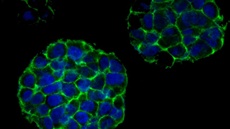3-D printed molecule models solve protein puzzles
02 Jan 2015
Printing out 3-D objects has taken the concept of DIY - do it yourself - to a whole new level, with everything from violins to rifles and artificial limbs being made on 3-D printers. Now the technology is helping scientists gain insights into some of the tiniest constituents of the universe: biological molecules.
 Although researchers have used computer models to visualise the origami-like process of protein folding for years, "the experience itself is very different between looking at something on a flat screen, and actually holding an object and manipulating an object in your hands," said Arthur Olson, a molecular biologist at the Molecular Graphics Laboratory at the Scripps Research Institute in La Jolla, California. [10 Weirdest Things Created by 3-D Printing]
Although researchers have used computer models to visualise the origami-like process of protein folding for years, "the experience itself is very different between looking at something on a flat screen, and actually holding an object and manipulating an object in your hands," said Arthur Olson, a molecular biologist at the Molecular Graphics Laboratory at the Scripps Research Institute in La Jolla, California. [10 Weirdest Things Created by 3-D Printing]
This could one day help researchers design new drugs that more precisely target spots on virus molecules, or even manufacture artificial protein sensors.
2-D computer visualisations have limitations that can make them hard to interpret. For instance, when researchers try to move molecules around in computer simulations, they often go right through each other, which wouldn't happen in the physical world, Olson said. With a 3-D model, there's no way for two solid molecules to go right through each other.
Olson is using the 3-D-printed models to understand the function of HIV, the virus that causes AIDS, and sharing his models through the National Institutes of Health's 3-D Print Exchange. Meanwhile, other researchers are using the technology to design completely artificial molecules.
Naturally occurring proteins are very good at detecting molecules, such as small concentrations of a poison or explosives in a subway, but they don't do well in extreme conditions, said Ron Zuckerman, a nanobioscientist at the Molecular Foundry at Berkeley Lab in California. So Zuckerman is creating synthetic molecules called "peptoids." These molecules would have the sensitivity of proteins, but could be made of stronger and more rugged synthetic amino acids.
Zuckerman's team began using 3-D printing because it provides researchers a more intuitive way to understand how flexible proteins are, which makes it easier to understand how they fold. The forces between molecules can be modeled with tiny magnets, and materials with different flexibility can mimic the bendiness of different protein structures.
Zuckerman is using printed models of real proteins that he calls "peppytides" for educational purposes as well.













.jpg)






.jpg)









